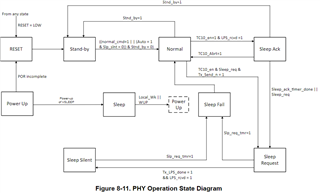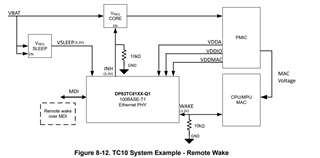Tool/software:
Hi TI team,
Would you please provide the steps of putting DP83TC812R into sleep mode by local sleep operation ?
I check this video on youtube, but I can not reproduce same phenomenon.
In my test case, one SoC controls two DP83TC812R, and the MDIs of these DP83TC812R are wired.
What are the steps to verify local sleep ?
Thanks




